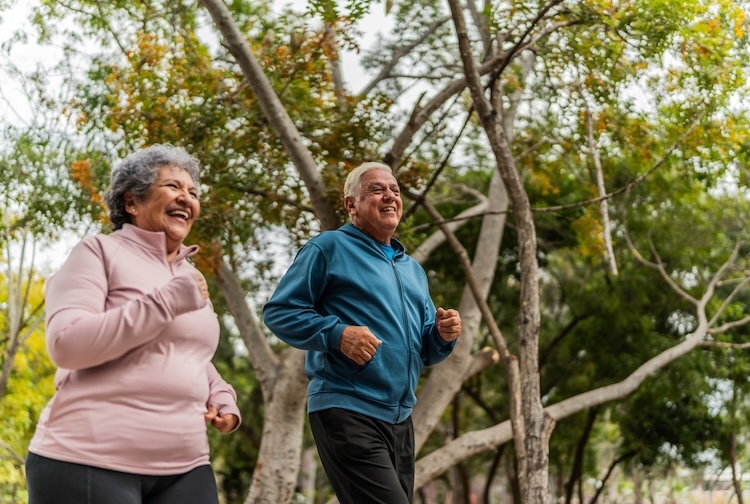U.S. life expectancy continued to fall in 2021
Vaccination could have lessened COVID impact, says VCU researcher.
April 08, 2022 The decline in U.S. life expectancy between 2019 and 2021 reflects the biggest drop since 1943, the deadliest year for Americans in World War II, researchers wrote. (Photo: Getty Images)
The decline in U.S. life expectancy between 2019 and 2021 reflects the biggest drop since 1943, the deadliest year for Americans in World War II, researchers wrote. (Photo: Getty Images)
By Brian McNeill
Life expectancy in the United States decreased during 2020 as a result of the pandemic. Now, a new study shows for the first time that life expectancy continued to decline even further in 2021.
“We already knew that the U.S. experienced historic losses in life expectancy in 2020 due to the COVID-19 pandemic. What wasn't clear is what happened in 2021. To our knowledge this is the first study to report data for 2021, and the news isn't good,” said corresponding author Steven Woolf, M.D., director emeritus of the Center on Society and Health at Virginia Commonwealth University.
U.S. life expectancy decreased from 78.86 years in 2019 to 76.99 years in 2020 and 76.60 years in 2021, a net loss of 2.26 years, according to the study, “Changes in Life Expectancy Between 2019 and 2021: United States and 19 Peer Countries,” which was published online Thursday but has not yet been peer reviewed.
The study by researchers at University of Colorado Boulder, the Urban Institute and VCU shows that the decline in U.S. life expectancy between 2019 and 2021 reflects the biggest drop since 1943, the deadliest year for Americans in World War II.
The study investigated mortality data for not only the U.S., but also 19 other high-income countries. In contrast to the U.S., the 19 peer countries experienced a smaller decline in life expectancy between 2019 and 2021 (an average of 0.57 years) and an average 0.28-year increase between 2020 and 2021 — widening the gap in life expectancy between the United States and peer countries to more than five years.
“While other high-income countries saw their life expectancy increase in 2021, recovering about half of their losses, U.S. life expectancy continued to fall,” Woolf said. “This speaks volumes about the life consequences of how the U.S. handled the pandemic, and in a country where the U.S. Constitution and 10th Amendment grant public health authority to the states, I believe the U.S. catastrophe speaks volumes about the policies and behaviors of U.S. governors — at least some of them. A highly effective vaccine was available in 2021 that made COVID-19 deaths almost completely preventable.”
Resistance to vaccines, safety practices, contributed to lower life expectancy
The enormous loss of life documented by the study was caused in part by COVID-19 variants, delta and omicron, but those same variants swept through other countries where life expectancy actually increased, Woolf said.
“Deaths from these variants occurred almost entirely among unvaccinated people,” said Woolf, a professor in the Department of Family Medicine and Population Health at the VCU School of Medicine. “What happened in the U.S. is less about the variants than the levels of resistance to vaccination and the public's rejection of practices, such as masking and mandates, to reduce viral transmission.”
Underlying health conditions made U.S. population more vulnerable to COVID-19
Lead author Ryan Masters, Ph.D., an assistant professor of sociology at University of Colorado Boulder and an affiliate with the CU Population Center, said high rates of obesity and heart disease, along with inequities in access to health care, were already leading the U.S. to lose ground with respect to health and survival before the pandemic.
“Those same factors made the U.S. more vulnerable than other countries to the mortality consequences of COVID-19,” Masters said.
Decrease in U.S. life expectancy highly racialized
Hispanic and Black populations experienced the largest losses in life expectancy between 2019 and 2021, according to the study. The disproportionate impact reflected “the legacy of systemic racism and inadequacies in the U.S. handling of the pandemic,” researchers wrote.
In 2020, the largest decreases in life expectancy occurred among Black and Hispanic populations. In 2021, however, life expectancy plateaued in the Hispanic population and increased among the Black population. Only the white population saw a decline in life expectancy, the study reported.
“Early in 2021, knowing an excellent vaccine was being distributed, I was hopeful that the U.S. could recover some of its historic losses,” said Woolf, VCU's C. Kenneth and Dianne Wright Distinguished Chair in Population Health and Health Equity. “But I began to worry more when I saw what happened as the year unfolded. Even so, as a scientist, until I saw the data it remained an open question how U.S. life expectancy for that year would be affected. It was shocking to see that U.S. life expectancy, rather than having rebounded, had dropped even further.”
“Sadly, it was not a surprise to see the disproportionate impact on people of color,” he continued. “Our research had shown that previously. But there was an interesting plot twist in 2021: the only decrease in life expectancy occurred in white people. Life expectancy in the Black population even increased. Despite that increase, life expectancy in the Black population remains far lower than in other groups, but the disproportionate impact on white people holds clues to what happened in 2021.”
In addition to Woolf and Masters, the study was co-authored by Laudan Y. Aron, a senior fellow in the Health Policy Center at the Urban Institute.


.jpg)

